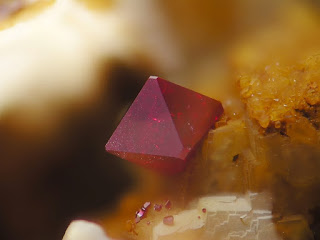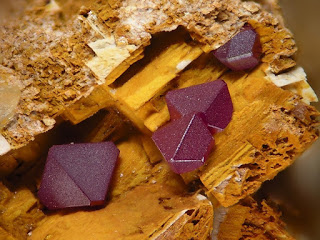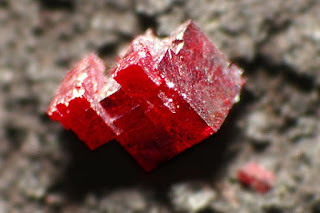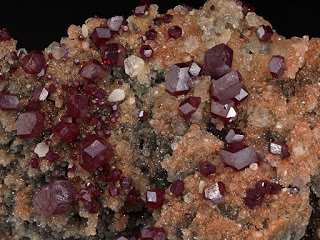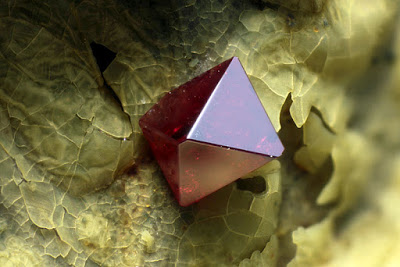
Chemical Formula: Cu2O
Locality: Commonly in the copper deposits of SW USA and in Chile.
Name Origin: From the Latin, cuprum, meaning copper. Chalcotrichite from the Greek, meaning “hairy copper.”
Cuprite is an oxide mineral composed of copper(I) oxide Cu2O, and is a minor ore of copper.
Its dark crystals with red internal reflections are in the isometric system hexoctahedral class, appearing as cubic, octahedral, or dodecahedral forms, or in combinations. Penetration twins frequently occur. In spite of its nice color it is rarely used for jewelry because of its low Mohs hardness of 3.5 to 4. It has a relatively high specific gravity of 6.1, imperfect cleavage and a brittle to conchoidal fracture. The luster is sub-metallic to brilliant adamantine. The “chalcotrichite” variety typically shows greatly elongated (parallel to [001]) capillary or needle like crystals forms.
It is a secondary mineral which forms in the oxidized zone of copper sulfide deposits. It frequently occurs in association with native copper, azurite, chrysocolla, malachite, tenorite and a variety of iron oxide minerals. It is known as ruby copper due to its distinctive red color.
Cuprite was first described in 1845 and the name derives from the Latin cuprum for its copper content.
Cuprite is found in the Ural Mountains, Altai Mountains, and Sardinia, and in more isolated locations in Cornwall, France, Arizona, Chile, Bolivia, and Namibia.
Physical Properties of Cuprite
Cleavage: {111} Imperfect
Color: Brown red, Purple red, Red, Black.
Density: 6.1
Diaphaneity: Transparent to translucent
Fracture: Brittle – Conchoidal – Very brittle fracture producing small, conchoidal fragments.
Hardness: 3.5-4 – Copper Penny-Fluorite
Luminescence: Non-fluorescent.
Luster: Adamantine
Magnetism: Nonmagnetic
Streak: brownish red
Photo
